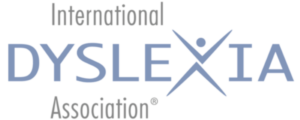Structured Literacy: Teaching Our Children to Read
This is a Guest Post by Hal Malchow, President of the International Dyslexia Association
Across America, parents of children with learning differences struggle to get “appropriate education” in their public schools. The law provides children with dyslexia the right to an IEP. But few schools have teachers qualified to teach reading in the right way.
The problem with reading instruction is not limited to children with dyslexia and other learning disorders. There is a mountain of research showing that the approach to reading that was developed to help children with dyslexia learn to read works best for all children as well. And because our schools are teaching reading in the wrong way, only 34% of third-graders are reading at a proficient level, and reading scores on the SAT have fallen to a 40-year low.
 The International Dyslexia Association is preparing a major campaign to change how reading is taught in America.
The International Dyslexia Association is preparing a major campaign to change how reading is taught in America.
We have published standards showing what research demonstrates to be best practices in reading instruction. We are accrediting universities that prepare their graduates to teach reading in the right way. Now we are building a certification exam that will provide qualified teachers with credentials recognizing their ability to bring best practices into the classroom.
But the biggest part of our campaign lies ahead of us. One problem is that our approach to reading instruction goes by many names. So IDA, after surveying professionals, teachers, and parents, has adopted “Structured Literacy” to describe the family of reading instruction that goes by many names (Orton-Gillingham, Multi-Sensory, Explicit Phonics, and others). We are working to build a coalition that includes not just organizations like Lexercise that serve people who learn differently but organizations working for evidence-based reading instruction that will benefit all beginning readers.
In 2015 we will begin a marketing campaign to show educators the benefits of Structured Literacy. By bringing Structured Literacy into American classrooms, we will not only provide “appropriate education” for children with dyslexia. We will help all students gain better reading skills and greater academic success.
Learn more about the importance of structured literacy here.
3 Responses to Structured Literacy: Teaching Our Children to Read
-
-
When my daughter, now 17, was tested for disabilities by the school, they concluded that she did not qualify for special services. Basically, they said there wasn’t anything wrong. She was in the 3rd grade at the time of testing and could not read, yet her 4 older siblings had never had any problems learning to read and memorizing math facts, etc. She was a bright, intelligent child so we had her tested through a private organization. They found she was “moderate” dyslexic and dysgraphic. I’m glad to read about your campaign to get Structured Literacy into the classroom. Additionally, we have two sons who are also dyslexic and we home educate for the very reason that the methods they use in the school system would sell these bright young men short.
Leave a comment
Improve Your Child’s Reading
Learn more about Lexercise today.
15-minute consultation
Hal Malchow
Hal Malchow is the President of The International Dyslexia Association. Hal is a successful businessman and political consultant who has provided fundraising services for groups like the American Red Cross, the Democratic National Committee, the US Olympic committee and many others. He has worked for six presidential candidates and built a $40 million business from his kitchen table in a basement efficiency apartment. On the IDA Board, Hal has been a leader in modernizing its membership program and reforming its bylaws. He closed his company in 2010 and now, in addition to his work with IDA, he co-chairs the Capital Campaign at the Lab School of Washington, consults with a handful of clients and is releasing his second fantasy novel, The Dragon and the Firefly.


Hello. Our 8 yo son was diagnosed with a dual learning disability in reading and writing. His dyslexia is moderate. He now has an IEP. We will be moving within the next1-2 years when my husband retires from the military. Is there any site in each state or city that ranks public schools for research-based dyslexia services/instruction. We are becoming very overwhelmed as we look at many school systems and can not ascertain if they have qualified teachers and curriculums in place for dyslexic students. Thanks so much for your reply.